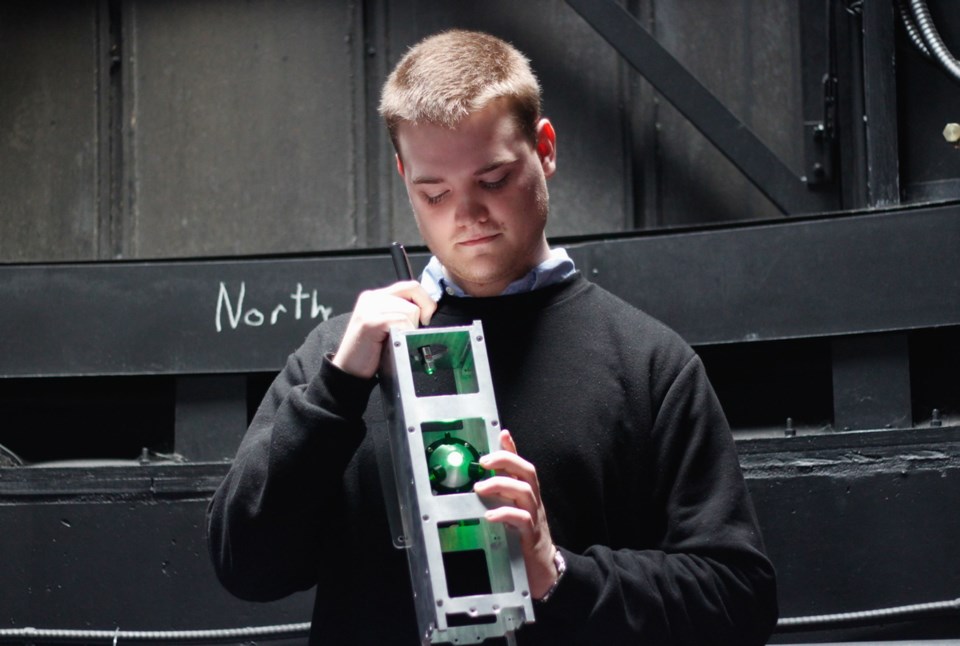A small rectangular box built of aluminum and glass will be launched to orbit the Earth so that B.C. students can improve the functioning of the world’s telescopes.
The University of Victoria effort, in collaboration with the University of British Columbia and Simon Fraser University, will see the box tossed from the International Space Station in 2020 to orbit the Earth.
Once in orbit, the satellite, named OrcaSat, will emit a laser light that has been measured for its total emitted light energy. On the Earth’s surface, astronomers will observe that measured light and calibrate how much light is being lost as it travels through the smog, clouds and turbulence of the atmosphere.
“When light is coming in from a star at night some of the light will be reflected and not all of its light gets through the atmosphere,” said OrcaSat project leader and UVic student Bryce Edwards. “What OrcaSat will try to do is eliminate these uncertainties.”
With a figure for light energy being lost to the atmosphere on any given day, astronomers will be able to improve the accuracy of observations from ground-based optical telescopes by as much as 10 times, said Justin Albert, UVic associate professor of physics and astronomy.
OrcaSat is one of 15 satellites in a program of the Canadian Space Agency called the Canadian CubeSat Project.
The 15 satellites, made up of cubic modular units, are being launched as collaborative efforts in teams drawn from 36 post-secondary organizations.
The Canadian CubeSat Project was launched Friday in an event that was streamed live from Winnipeg where astronaut Jenni Sidey introduced participating student teams from campuses across Canada, including OrcaSat at UVic.
OrcaSat stands apart from the others because almost immediately it will be available for use by all manner of astronomy researchers on Earth. According to the UVic team, scientists at major telescope installations in places such as Hawaii, Chile and Antarctica are already interested.
UVic astronomers said their science is based on interpreting observations and measurements of light emitted from far-off galaxies.
Space-based telescopes, like the Hubble launched in 1990, are outside the Earth’s atmosphere and can avoid its reflection, refraction and blockage problems.
But they are enormously expensive to build, launch and maintain.
Astronomy masters student Thor Tronrud recalled the initial problem with Hubble’s defective mirror. It wasn’t corrected until 1993 and required a special mission by the NASA Space Shuttle.
“That was an incredibly expensive space mission and it was really just about putting a contact lens on an unmanned space telescope,” Tronrud said.
“You don’t need to worry about that with a ground-based telescope because you can just walk over and fix it.”
He said using OrcaSat to make adjustments in measurements taken at ground-based telescopes will make them competitive with installations in space.
“We understand pretty well how light is affected and diffused as it travels through empty space,” Tronrud said. “But once it hits the atmosphere we can’t model anything because the atmosphere is too turbulent and there is too much stuff going on.”
“What this [OrcaSat] will do is remove that last bit of uncertainty,” he said.



